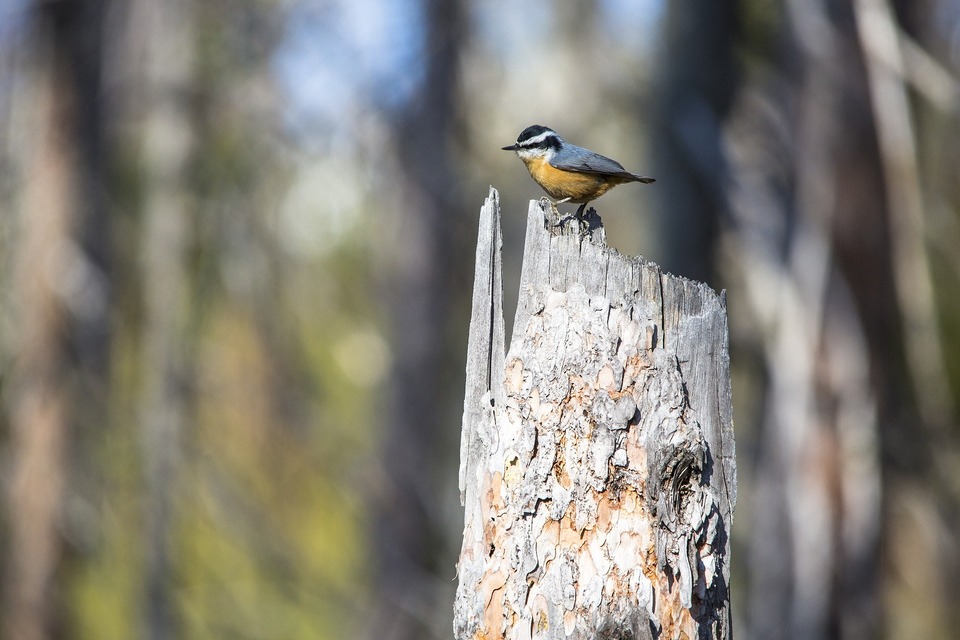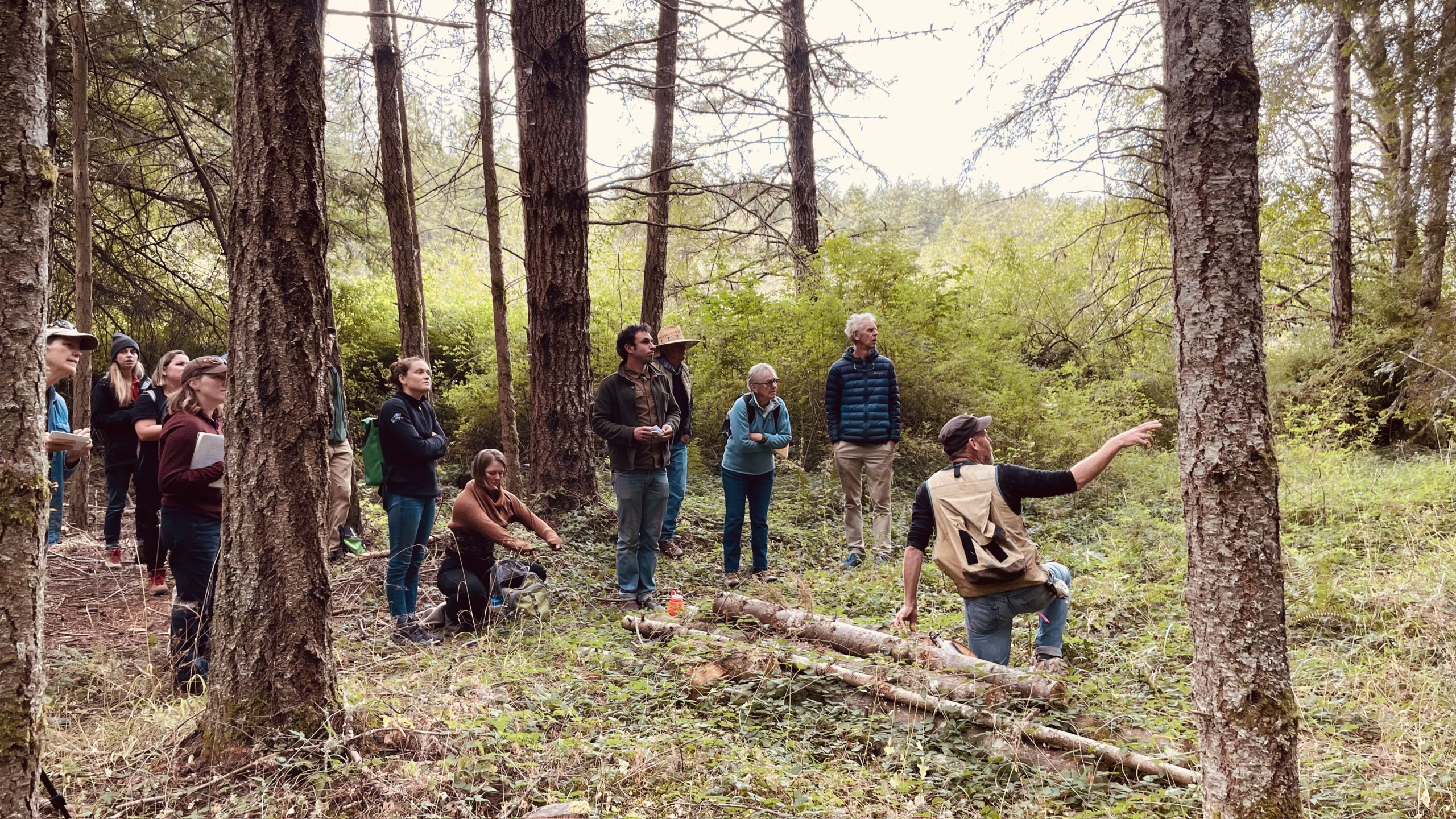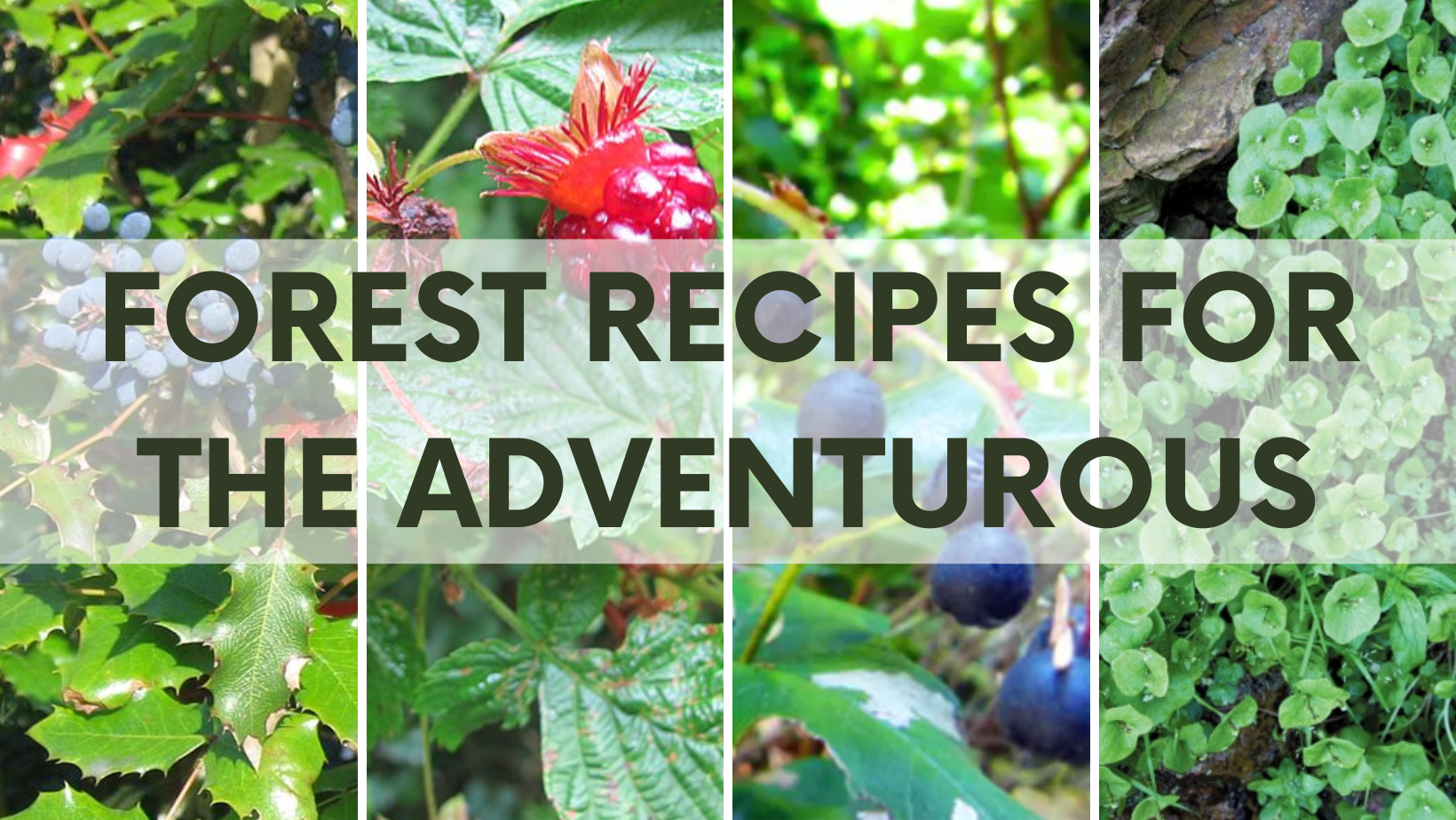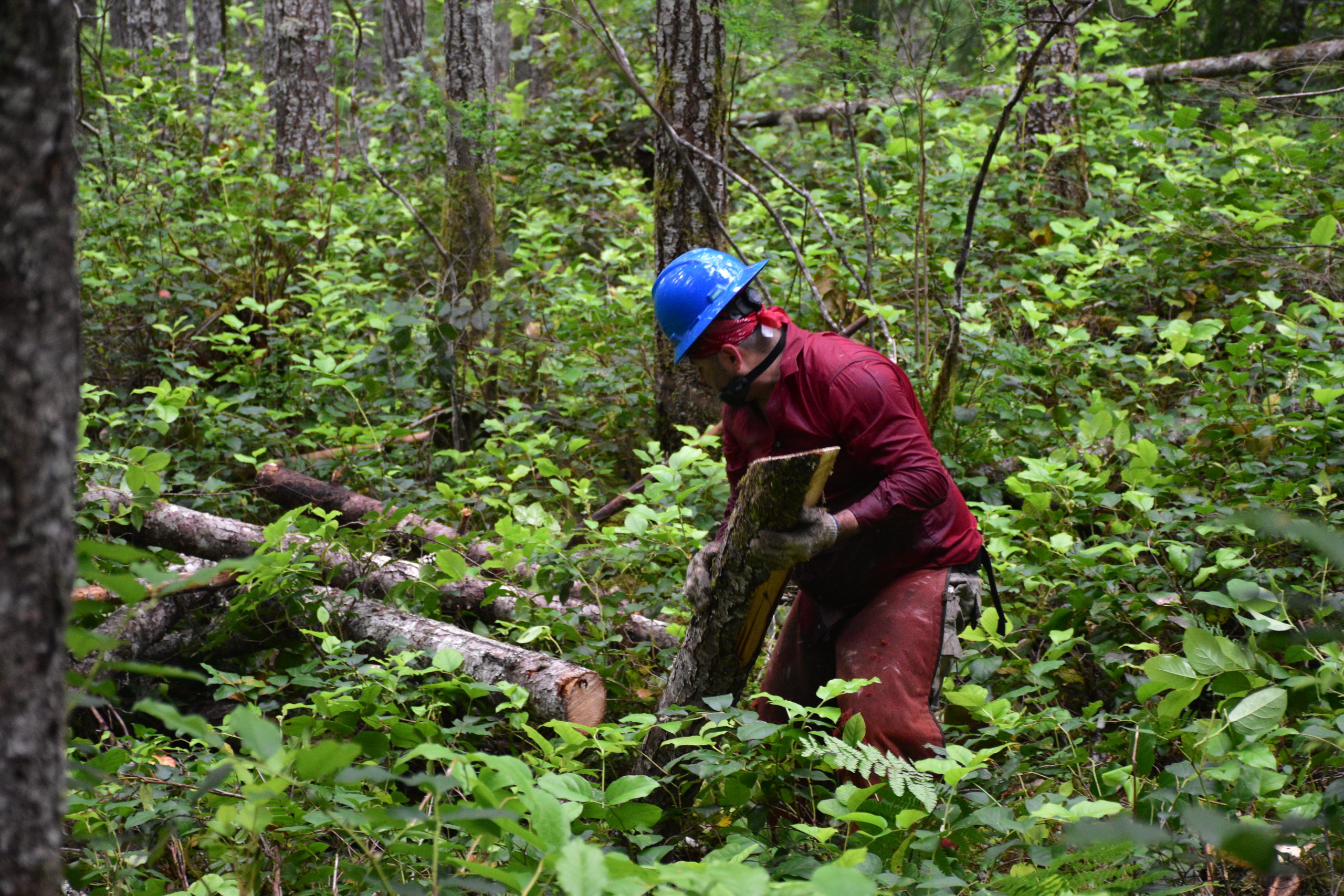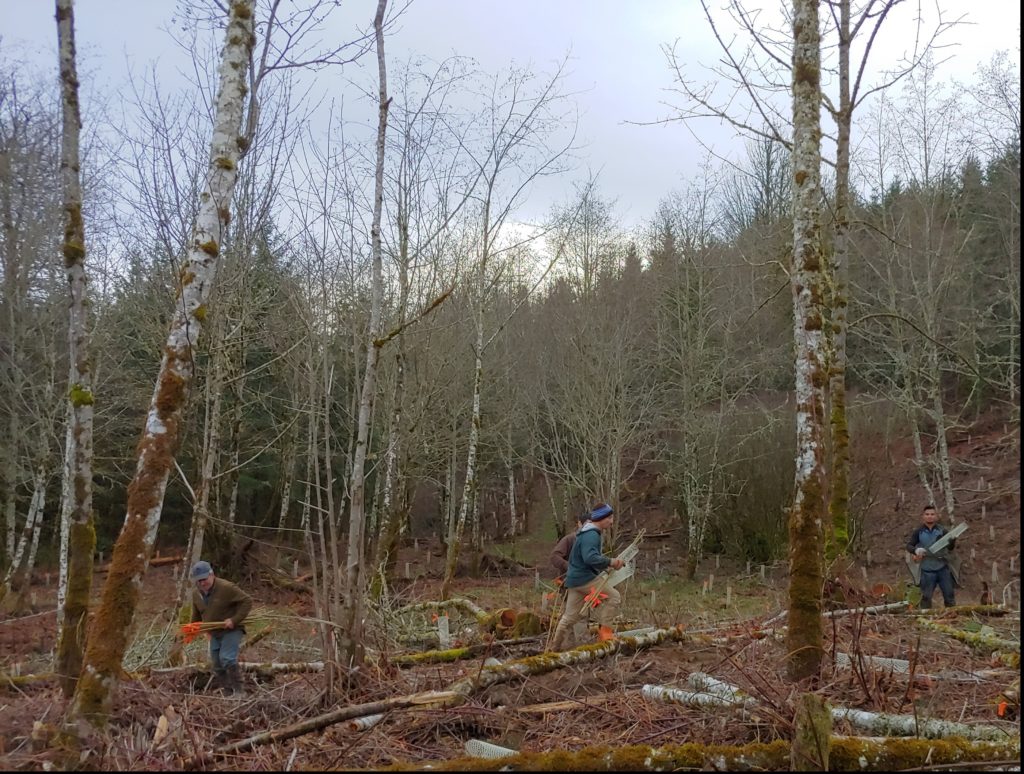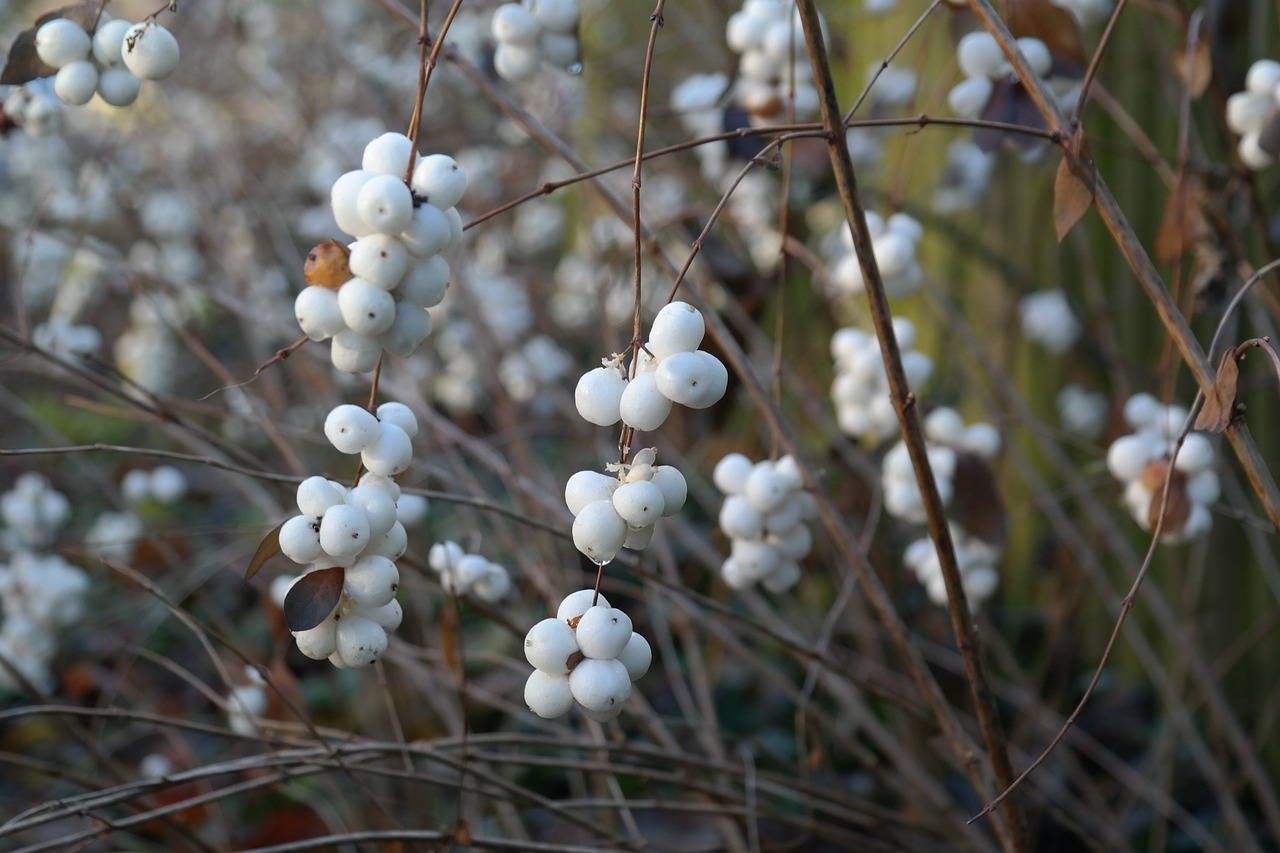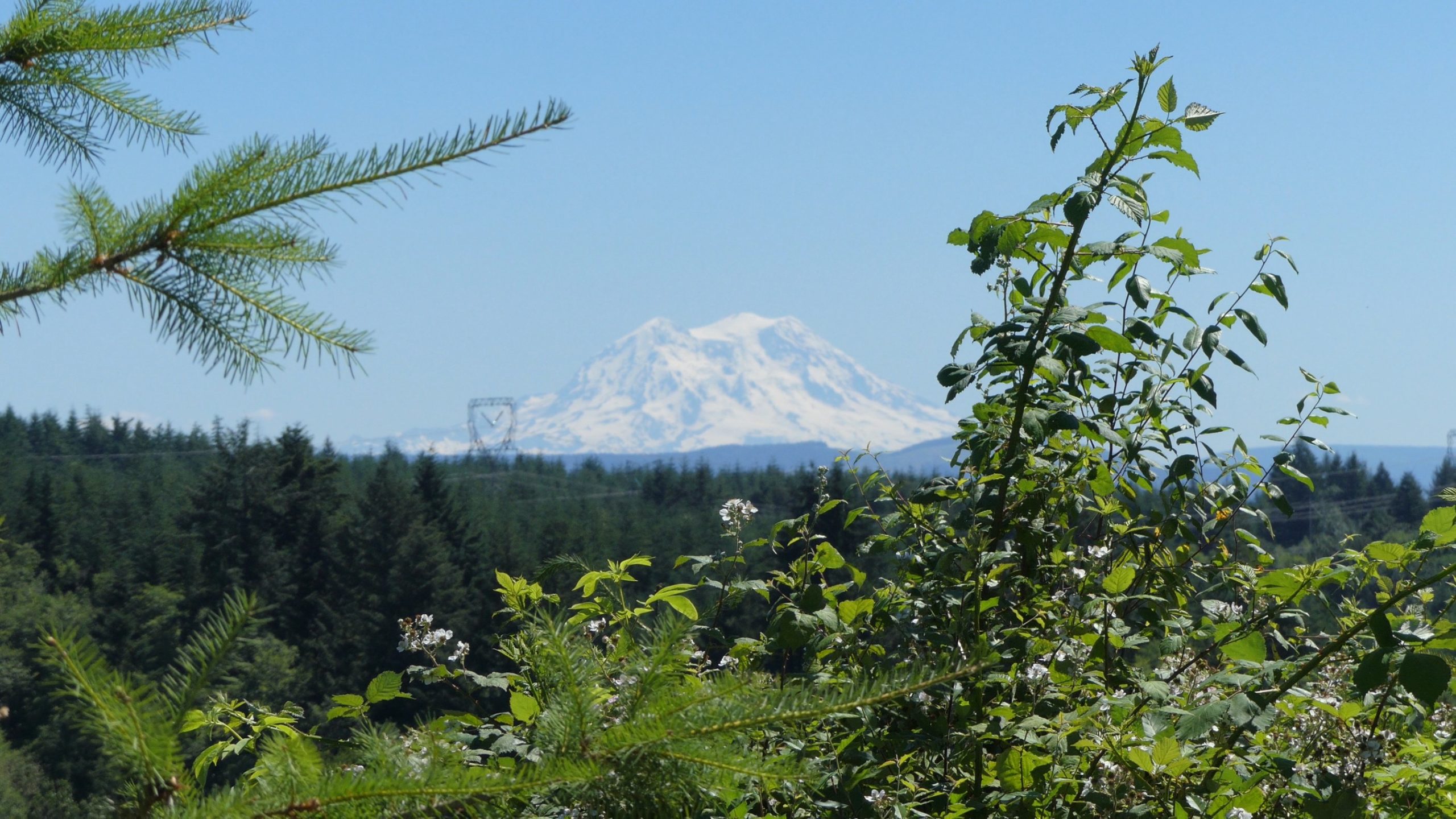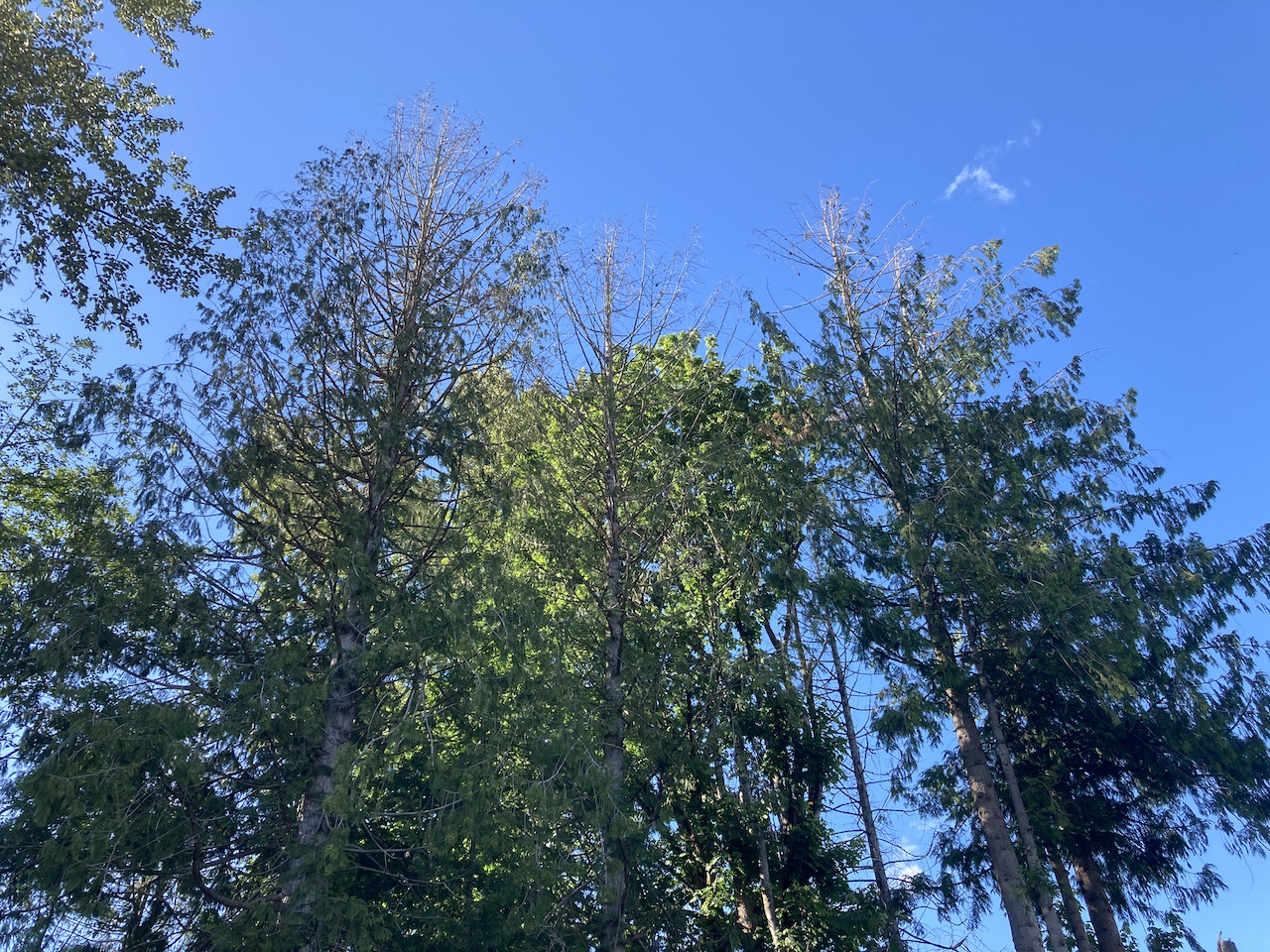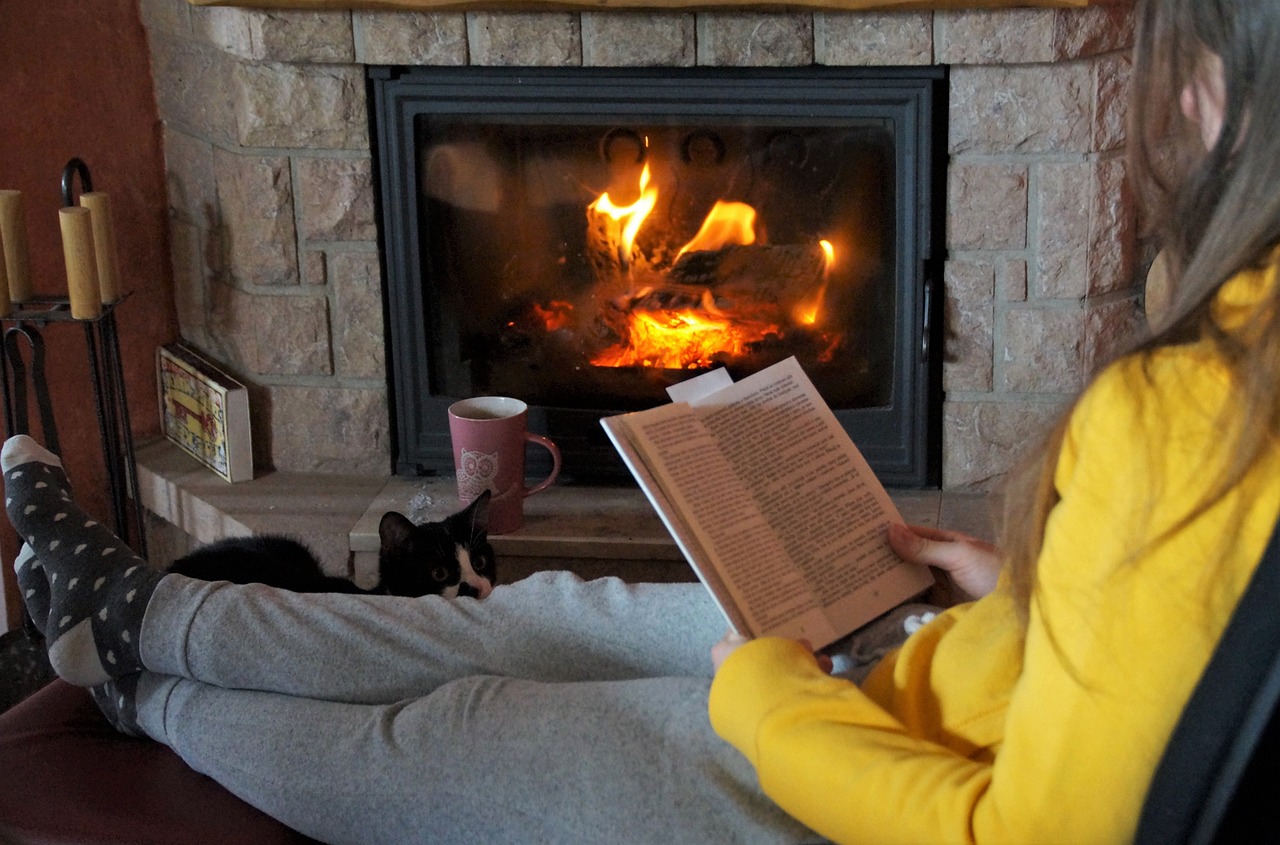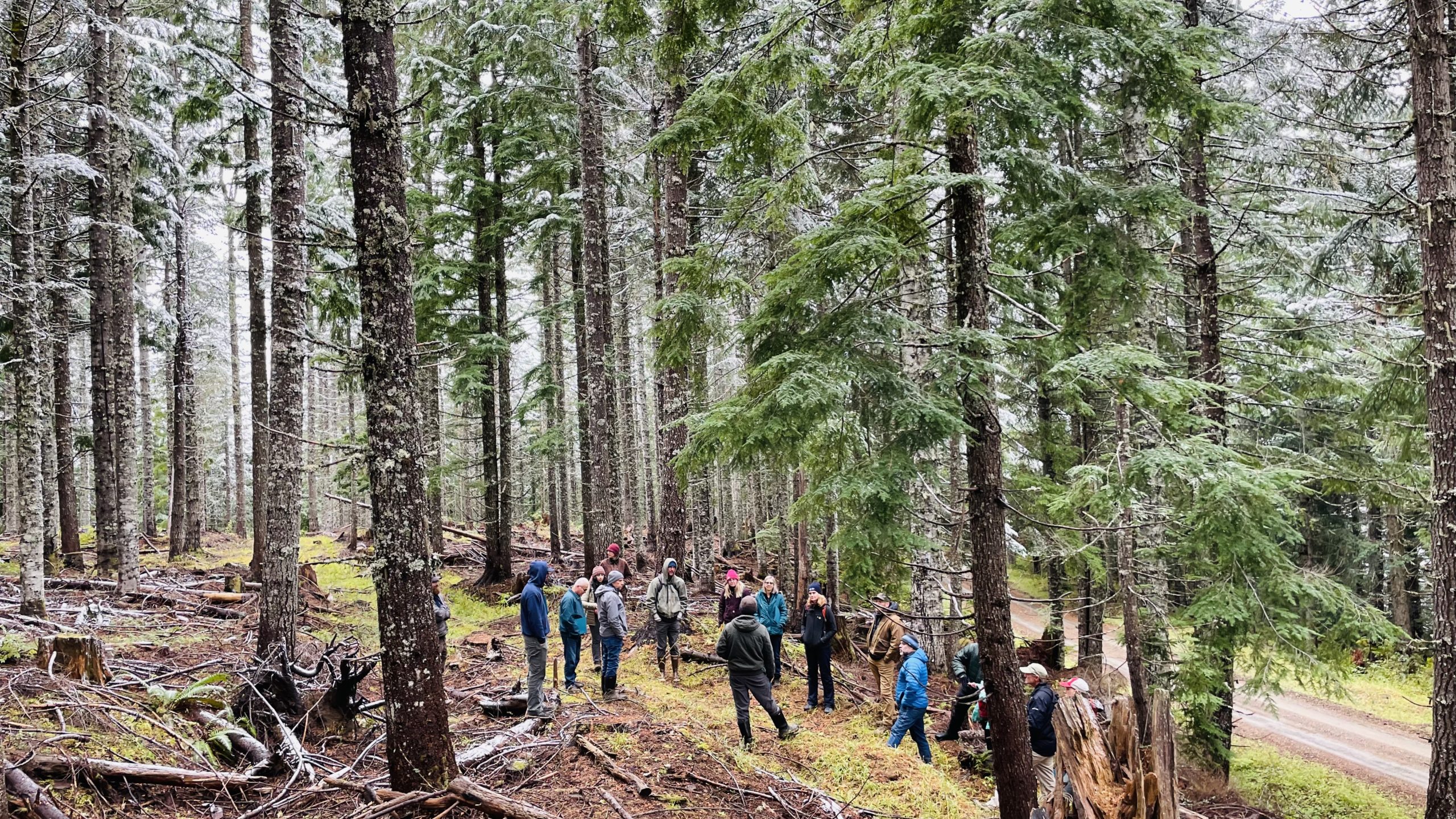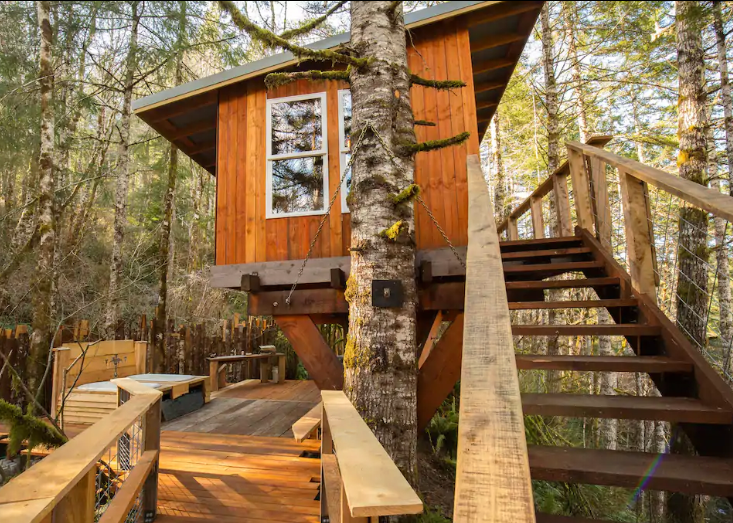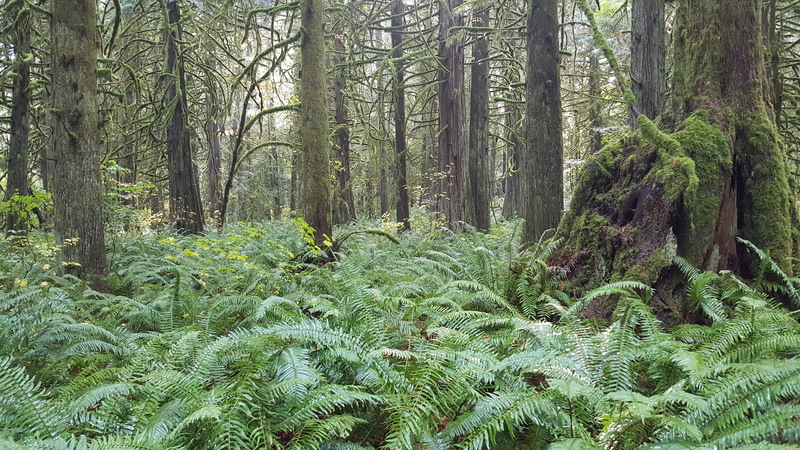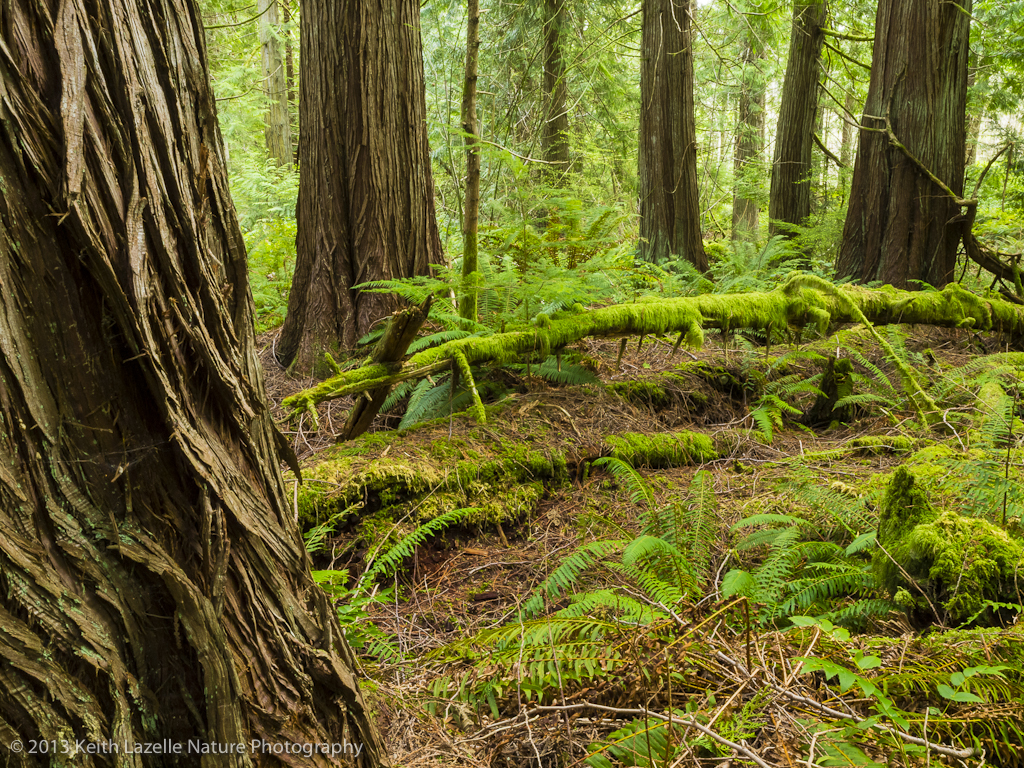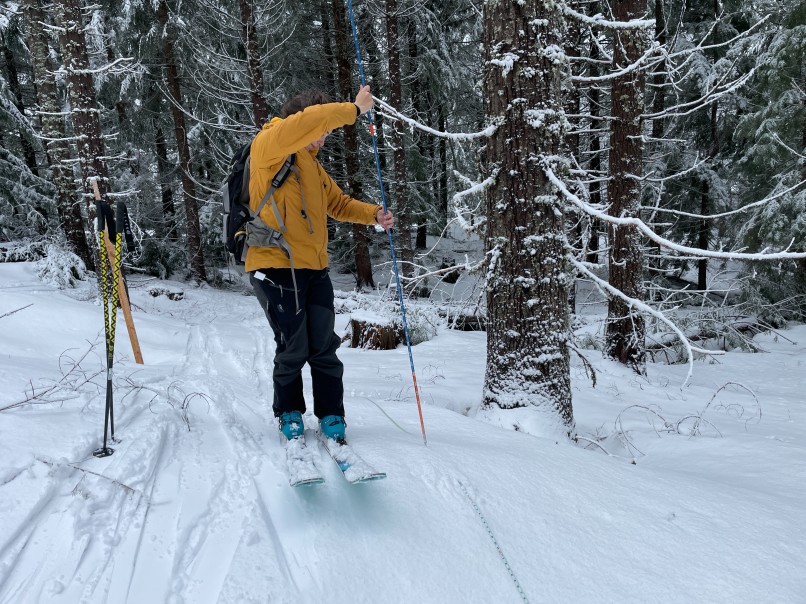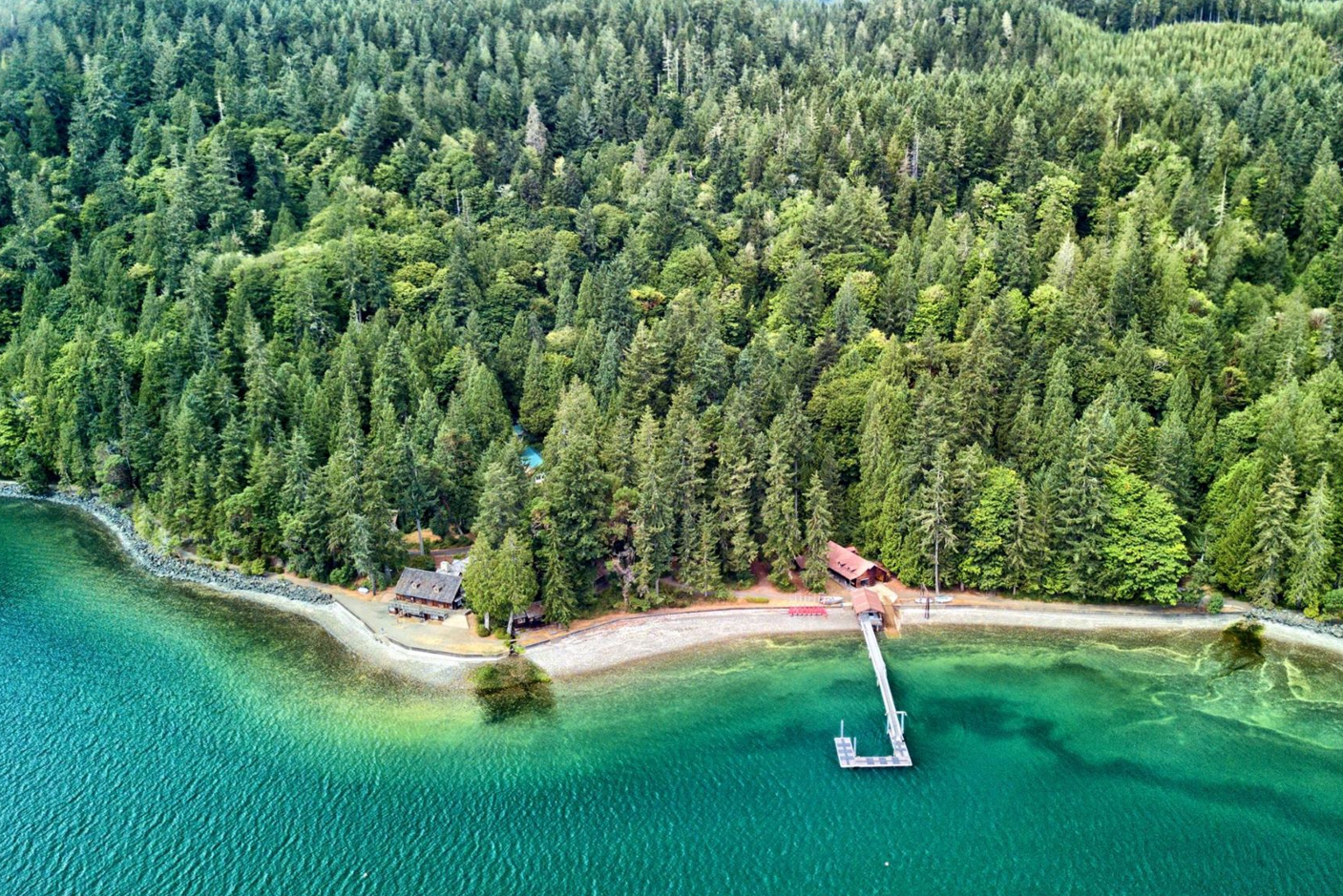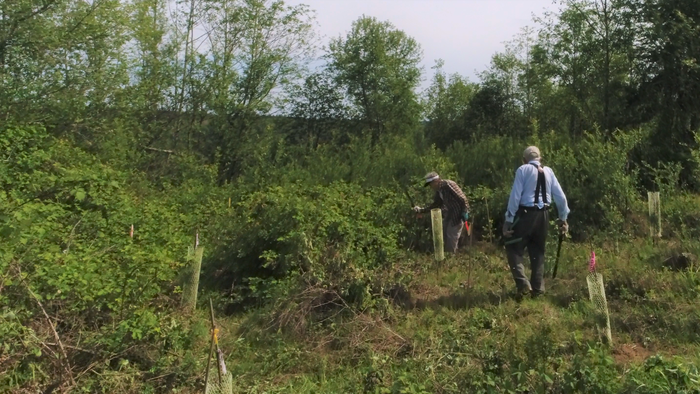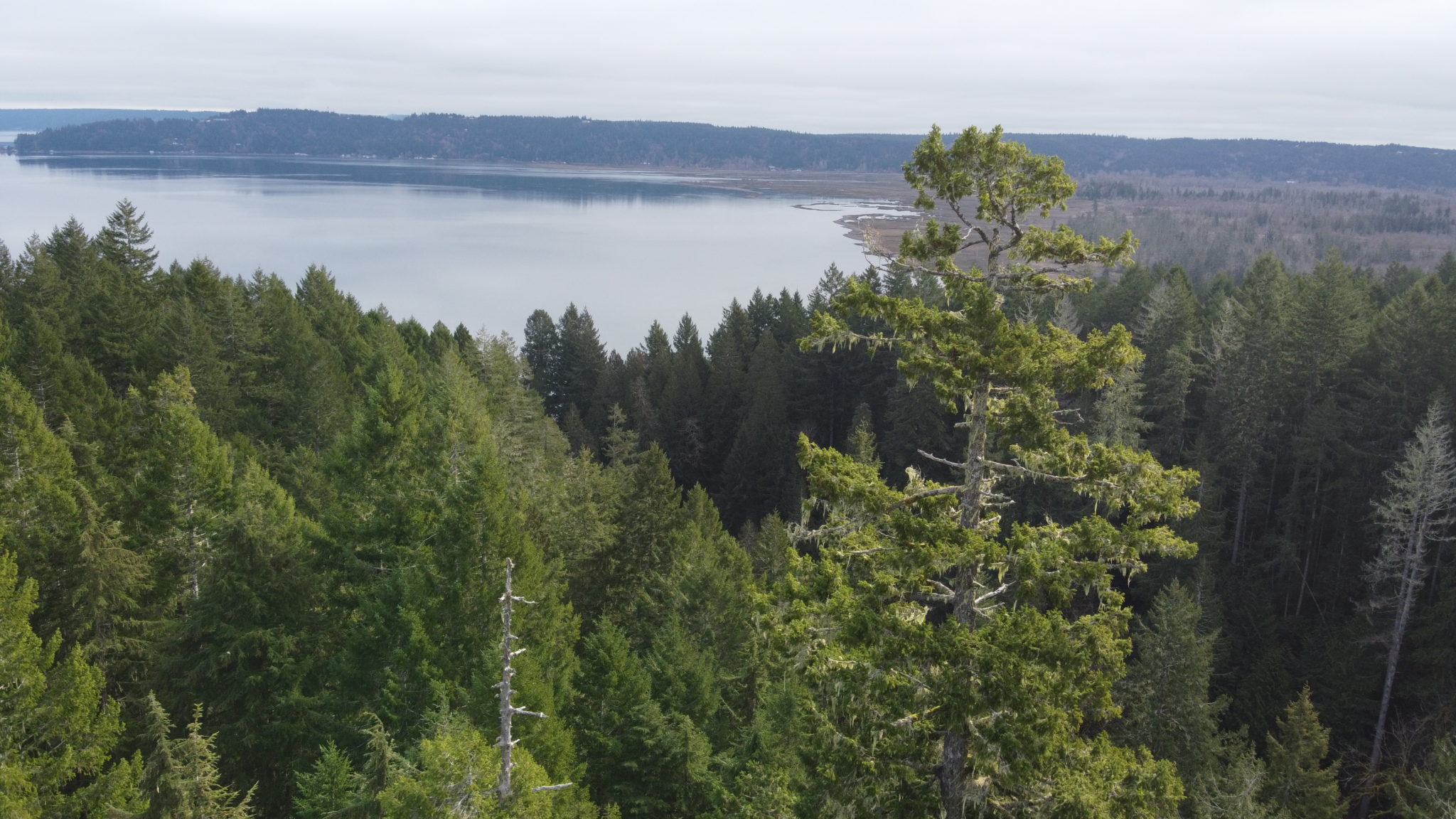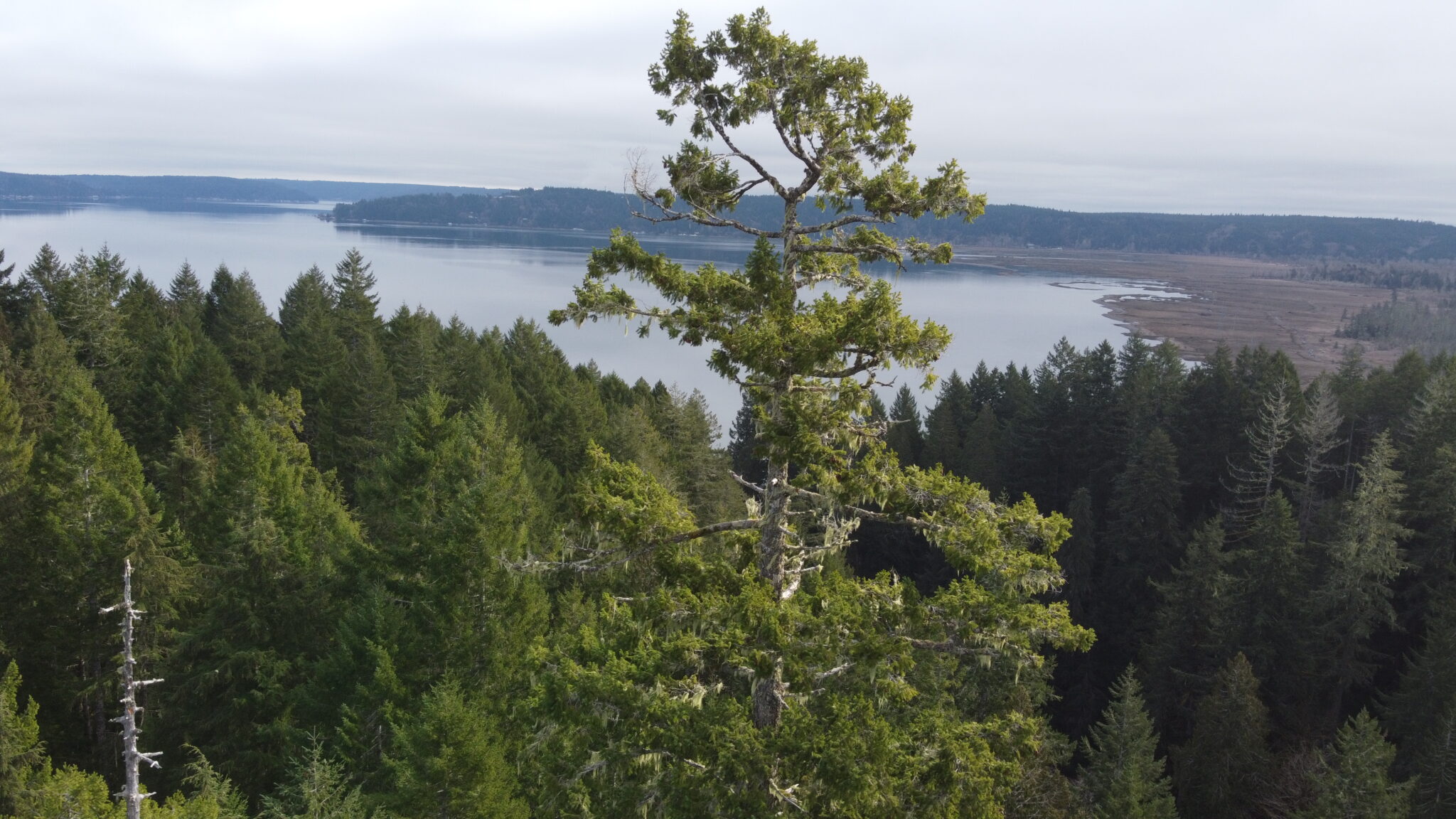This bird monitoring study, funded by a $25,000 grant from the Cornell Lab of Ornithology’s Land Trust Bird Conservation Initiative, is going to use recordings of birdsong and bird calls captured by the AudioMoth devices to understand how a set of ecological forest management activities impact bird populations.
New Free Workshop: Stewarding a Climate-Resilient Forest West of the Cascades
Learn hands-on strategies for managing healthy, resilient forests in Jefferson County. At this free workshop in Jefferson Land Trust’s Valley View Forest, professional foresters will introduce forest owners to a set of simple, hands-on strategies for increasing their forests’ resilience in the face of a warmer and drier climate. Participants will develop a deeper understanding […]
Forest Recipes for the Adventurous
You’ve probably heard of stinging nettle tea — how about stinging nettle pesto? Japanese knotweed hummus? These six recipes draw from the bounty found in Pacific Northwest forests – both wild and urban lands.
Camera Traps for Climate Adaptation…and Critters!
Article by Margaux Clarke. Margaux completed her University of Washington Environmental Studies Capstone Project with Northwest Natural Resource Group in Winter/Spring 2023. 3… 2… 1… Say Cheese! NNRG’s use of scout cameras (camera traps) at their climate adaptation project in Nisqually Community Forest are an important part of the snow monitoring research, but they provide […]
Active Management and Small Landowners: It’s in the Intention
By Jaal Mann and Rowan Braybrook. This article was originally published in the Winter 2023 issue of Western Forester, which focused on exploring what active management of forests means. You can read the full issue here. A prescribed burn to maintain open prairie. An individual western redcedar selected to make bentwood boxes or a dugout canoe. A […]
TIME TO START THINKING ABOUT 2024 EQIP PROJECTS
The Environmental Quality Incentives Program (EQIP) is a technical and financial assistance program managed by the USDA’s Natural Resources Conservation Service. EQIP helps forest owners access technical expertise to develop and complete conservation practices that improve the health and productivity of their land.
Winter & Spring 2023 Washington and Oregon Native Plant Sales
The Winter Wet Season In The Pacific Northwest Is An Ideal Time To Plant Young Trees And Native Shrubs! Planting native trees and shrubs enhances forest biodiversity by providing habitat for wildlife and forage for pollinators. It’s also a great way connect to the land and increase your aesthetic and recreational appreciation for the forest. […]
Monitoring Mount Heaven
Last spring, Paul Hansen and his 16-year-old granddaughter found themselves tromping through his forest near Mount Rainier (Tahoma), in Washington. Both were searching for old PVC pipe remnants and rebar stakes hammered into the ground, but their motives that day were split. Paul was hoping to find the centers of circular plots he’d marked out 10 […]
Two Methods to Contribute to Research About the Dieback of Western Redcedar
Forest owners can help accelerate research and understanding about the factors affecting the health of western redcedar through two methods: sharing observations online or collecting soil samples
NNRG JUNE FIRESIDE CHAT: Introduction to Forest Practices Applications
Fireside chats are monthly community events where forest owners can talk directly with NNRG staff and other forestry professionals, and connect with other forest owners in western Washington and Oregon.
2022 NNRG Staff Book Recommendations
We asked the NNRG staff and board — notorious for thinking about forests as much off-the-clock as on — for the best forestry, nature, PNW, and environment-related books they read this year. The result is a list as varied as it is long! Scroll down to read the whole list. Deep River Author: Karl MarlantesPick […]
What Happened in 2022? 10 of NNRG’S most notable accomplishments
2023 is fast approaching, and we’re eager as beavers in a wetland forest to start some of the new projects we have planned. But before we start construction on our next lodge (so to speak), we’d like to take a moment to reflect on some of NNRG’s most notable achievements and activities of 2022. […]
Forest Bathing Takes on New Meaning in This Treehouse Airbnb
Forest owners looking for ways to profit off of their forests sometimes turn to producing non-timber forest products, or NTFPs. Some lease salal harvesting rights to greens companies; others make and sell evergreen wreaths made from cut boughs. One member of NNRG’s group’s FSC® certificate has created a successful business out of a less conventional NTFP: […]
Estate Planning Advice from A Family Forest
Planning what happens to your land after you pass on is a critical part of good forest stewardship. If you don’t plan to sell your land or pass it on to another family member, you’ll need to figure out not just how it will be managed in the future, but who will manage it. That involves a lot of decisions, and likely a lot of outside help. But even if you do plan to leave the land to your kids or other family members, don’t assume that transition will happen smoothly on its own.
Restoring watershed ecosystems at Tarboo Forest
Northwest Watershed Institute (NWI), a Port Townsend-based non-profit, leads the work to regrow old-growth forests in the uplands of Tarboo Creek and re-establish forested wetlands in the floodplain. Over the years, NWI has quilted together Tarboo Wildlife Preserve, 396 acres in the Tarboo valley near Quilicene, Washington.
Go with the Snow: Winter Forest Monitoring Results
The future is looking drier, and the trees are taking notice. With climate change creating warmer and drier summers, how can we use forestry techniques to increase snowpack and slow snowmelt for water availability? This question led us at NNRG to create an experiment in practical forestry methods, in collaboration with several partners.
Camp Robbinswold: Growing the Next Generation of Trees and Leaders
Nestled on the edge of the Olympic Peninsula about halfway down Hood Canal, Camp Robbinswold includes 570 acres of young, older, and mixed-age forest that is Forest Stewardship Council® certified through NNRG’s FSC® group certificate. The camp property includes 1.5 miles of shoreline and tidelands, a 10-acre freshwater lake, 350 acres of forest managed for […]
Forest Tour: Stand Release Techniques for Small Woodlands
This twilight tour will showcase a range of techniques for releasing young trees from competition. When attempting to establish a new generation of trees, forest owners face two fundamental tasks that can become increasingly tricky: seedling release and pre-commercial thinning. Seedlings planted after harvest face steep competition for light, nutrients, water, and native and nonnative […]
Read an Excerpt of our Forthcoming Book | A Forest of Your Own: The Pacific Northwest Handbook of Ecological Forestry
A new and unique project is underway for NNRG: we’re writing a book! Co-authored by NNRG’s Executive Director Seth Zuckerman and Director of Forestry Kirk Hanson, and published by Mountaineers Books, the book will be a “how-to” manual for forest owners that teaches them to notice the natural qualities of their land, decide how to care […]
Are We Old Growth Yet? NNRG Turns 30!
Since its founding in 1992, NNRG has been led and staffed by a small, rotating band of idealists and innovators. 30 years later, though the team remains small, the impact of our work has spread as swiftly as a field of salmonberry that’s found a gap in the canopy. When NNRG sprouted 30 years ago […]

